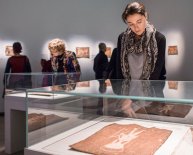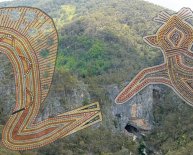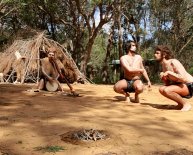
Australian Aboriginal culture history
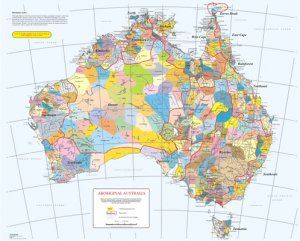 Before white settlement, most of the continent was occupied. Although their cultural and language patterns differed, the 600 or more scattered tribes existed in comparative harmony. They each occupied and hunted a recognised tract of land where sacred sites were protected, and boundaries, designed in the Dreamtime, were crossed only by invitation.
Before white settlement, most of the continent was occupied. Although their cultural and language patterns differed, the 600 or more scattered tribes existed in comparative harmony. They each occupied and hunted a recognised tract of land where sacred sites were protected, and boundaries, designed in the Dreamtime, were crossed only by invitation.
Tribal elders, because of their wisdom, upheld the laws. every occasion demanded proper behaviour and breaches of law brought severe penalties.
Their economy was based on relentless daily activities of hunting, fishing and seed gathering. Drought and famine were interprited to mean the spirits were displeased and that man must 'make amends'. All made and repaired spears, boomerangs and digging sticks which were mainly made of wood. As well Aboriginies used ground-edge tools made of stone 10, 000 years before their European counterparts.
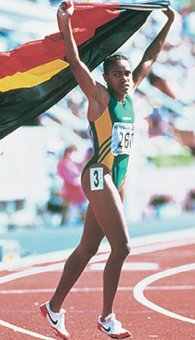 Above Map: of the general location of larger Aboriginal groupings of
Above Map: of the general location of larger Aboriginal groupings of
people in Australia. prior to the arrival of Europeans.
Aboriginal society was a creative one and art, music, song and dance were intergrated into both daily routine and spiritual ritual. The elders prescribed the form of ceremonial life, particularly the initiation, marriage and burial rites, in which the rest of the tribe, including songmen and artists, were totally involved. Corroborees and cave paintings reflected the powers of the Dreamtime and symbolic designs were etched into most objects, from tools to the sacred Dreamtime stone, the Tjurungo.
Sorcery was not a daily occurrence although no one doubted its power. 'Pointing the bone', the most dreaded magic used, projected the power of evil hidden in the bone into the victim's body.
As the Aborigines confronted European settlers, the whole fabric of this fragile society was shaken. Early contact was usually made on the outskirts of towns where the materialistic values of the white people clashed with the cooperative sharing of the Aborigines.
The myth that Australia was an uninhabited land when Captain James Cook discovered it gave the European settlers of the 18th and 19th centuries carte blanche to move into areas regardless of the consequences. Many Aborigines separated from their spiritual place and stable environment became dispossessed.
Pictured Right: Cathy Freeman, Aboriginal Australian and Olympic Gold Medalist.
By 1850, concern was felt and segregation laws were passed to suposedly protect Aborigines from the 'poverty' to which they were now exposed. Many were confined to missions and reserves run by white officials with extensive power and control.

